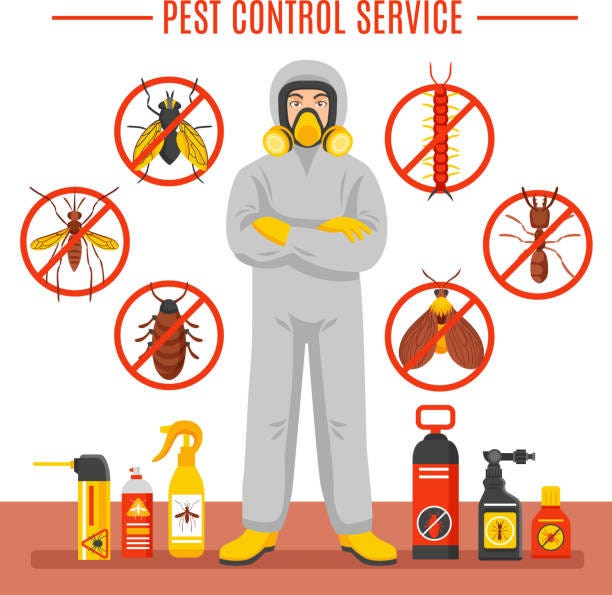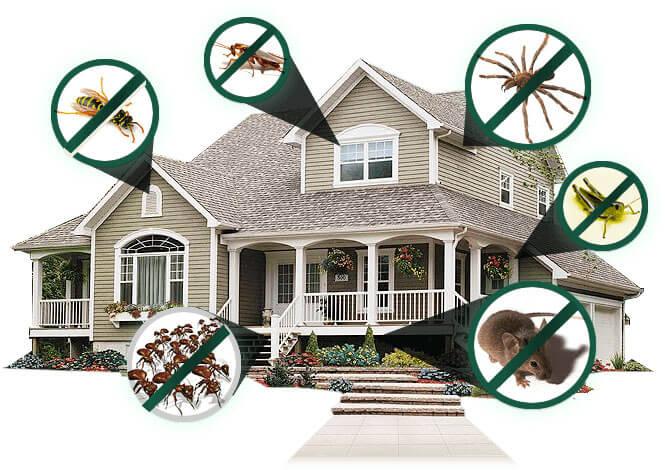Experienced A1 Exterminators Charlotte NC - Fast and Reliable Solutions
Experienced A1 Exterminators Charlotte NC - Fast and Reliable Solutions
Blog Article
Bed Pest Treatment Malfunction: Comparing Chemical Vs. Non-Chemical Solutions
In the realm of pest control, especially when taking care of the relentless issue of bed insects, the option in between chemical and non-chemical therapy solutions can be an essential one. Both approaches use distinctive advantages and downsides, influencing factors such as efficiency, security factors to consider, and overall cost. By checking out the nuanced information of each technique, a more clear understanding of which course to pursue in resolving a bed insect infestation can be achieved.
Performance of Chemical Treatments
Chemical treatments for bed pest infestations have actually been extensively identified for their potent and rapid efficacy in removing these parasites. When thinking about the performance of chemical treatments, it is vital to recognize that they can offer a comprehensive and quick solution to a bed insect issue. Expert pest control operators usually count on pesticides to target bed bugs at numerous phases of their life cycle, including adults, eggs, and fairies. These chemicals commonly function by interfering with the bed pests' worried system, bring about paralysis and eventual death.
Moreover, chemical therapies have the advantage of supplying recurring impacts, implying that they can remain to get rid of bed insects also after the preliminary application. This residual action is particularly useful in combating any potential re-infestations. Additionally, the fast action of chemical treatments can bring relief to people encountering severe bed pest problems, allowing them to reclaim control of their space quickly.
Safety Worry About Chemical Solutions
One critical facet that requires mindful factor to consider when utilizing chemical options for bed bug treatment is ensuring the safety of owners and the atmosphere. Direct exposure to specific chemicals made use of in bed bug therapies can lead to breathing problems, skin irritation, or various other negative reactions, especially in individuals with pre-existing conditions or level of sensitivities.
Additionally, the ecological influence of chemical services is an additional substantial factor to consider. Some chemicals made use of in bed insect treatments may be unsafe to advantageous bugs, wildlife, and ecosystems if they leach right into the soil or water supply. It is important to use chemical therapies sensibly, complying with safety guidelines, and taking into consideration less poisonous options to reduce these risks and make certain the safe and efficient management of bed bug infestations.
Advantages of Non-Chemical Strategies
Thinking about the possible safety problems and environmental impact associated with chemical options for bed pest therapy, checking out non-chemical approaches provides a promising alternative with a number of unique advantages. Non-chemical approaches supply a more secure choice for houses, specifically those with children, animals, or individuals conscious extreme chemicals. These strategies remove the threats of direct exposure to poisonous substances, decreasing the capacity for damaging health and wellness effects. Moreover, non-chemical therapies are ecologically pleasant, as they do not contribute to air or water air pollution, making them a lasting choice for bug control.
In addition, non-chemical options can be reliable in targeting bed bugs, consisting of hard-to-reach areas where chemical therapies might not permeate. Techniques such as heat treatment, vacuuming, vapor cleansing, and mattress coverings offer detailed elimination without using harmful chemicals. Furthermore, non-chemical methods can be much less disruptive, needing very little preparation and permitting quicker reentry right into dealt with areas. On the whole, choosing non-chemical bed bug therapy techniques not only focuses on safety and environmental management yet likewise guarantees efficient and extensive pest control.
Limitations of Non-Chemical Treatments

In addition, non-chemical treatments typically call for numerous applications to accomplish successful removal. This can be time-consuming and may not constantly assure full elimination of all bed bugs and click this link their eggs, especially in hard-to-reach or hidden places.
In addition, the success of non-chemical treatments greatly counts on appropriate implementation and thoroughness, which can be testing for individuals without professional competence. Insufficient application of non-chemical methods might result in incomplete eradication, resulting in consistent problems and the demand for added treatments.
For that reason, while non-chemical treatments have their benefits, it is essential to recognize these restrictions and consider them when identifying one of the most reliable approach for managing bed bug invasions.
Price Contrast: Chemical Vs. Non-Chemical Options
Provided the constraints connected with non-chemical treatments, a crucial aspect to review in the context of bed insect monitoring is the cost comparison between chemical and non-chemical alternatives. Chemical treatments normally involve the application of insecticides by specialists, which can vary from $250 to $900 per space, depending upon the extent of the problem and the dimension of the location to be dealt with. On the other hand, non-chemical therapies like warmth therapy or steam can be more pricey, with prices ranging from $1,000 to $6,000 for a whole home. While the initial cost of chemical therapies may seem reduced, multiple therapies may be required to totally remove the infestation, possibly boosting the general expense. On the various other hand, non-chemical alternatives might supply a more green and lasting remedy, although they can be cost-prohibitive for some people. Inevitably, when considering the expense of bed bug treatment options, it is essential to weigh the upfront expenses against the performance and long-term sustainability of the chosen approach.
Verdict

Thinking about the prospective safety and security worries and ecological effect linked with chemical services for bed bug therapy, discovering non-chemical techniques presents a promising alternative with several distinct advantages.Provided the limitations linked with non-chemical treatments, a vital facet to review in the context of bed bug administration is the cost comparison between chemical and non-chemical options. In contrast, non-chemical therapies like warmth therapy or steam can be extra expensive, with expenses ranging from $1,000 to $6,000 for a whole home. While the preliminary expense of chemical therapies might seem lower, several treatments might be Go Here required to fully remove the infestation, potentially increasing the overall price.In verdict, when contrasting chemical and non-chemical bed pest therapy alternatives, it is necessary to take into consideration performance, safety and security, advantages, restrictions, and expense.
Report this page